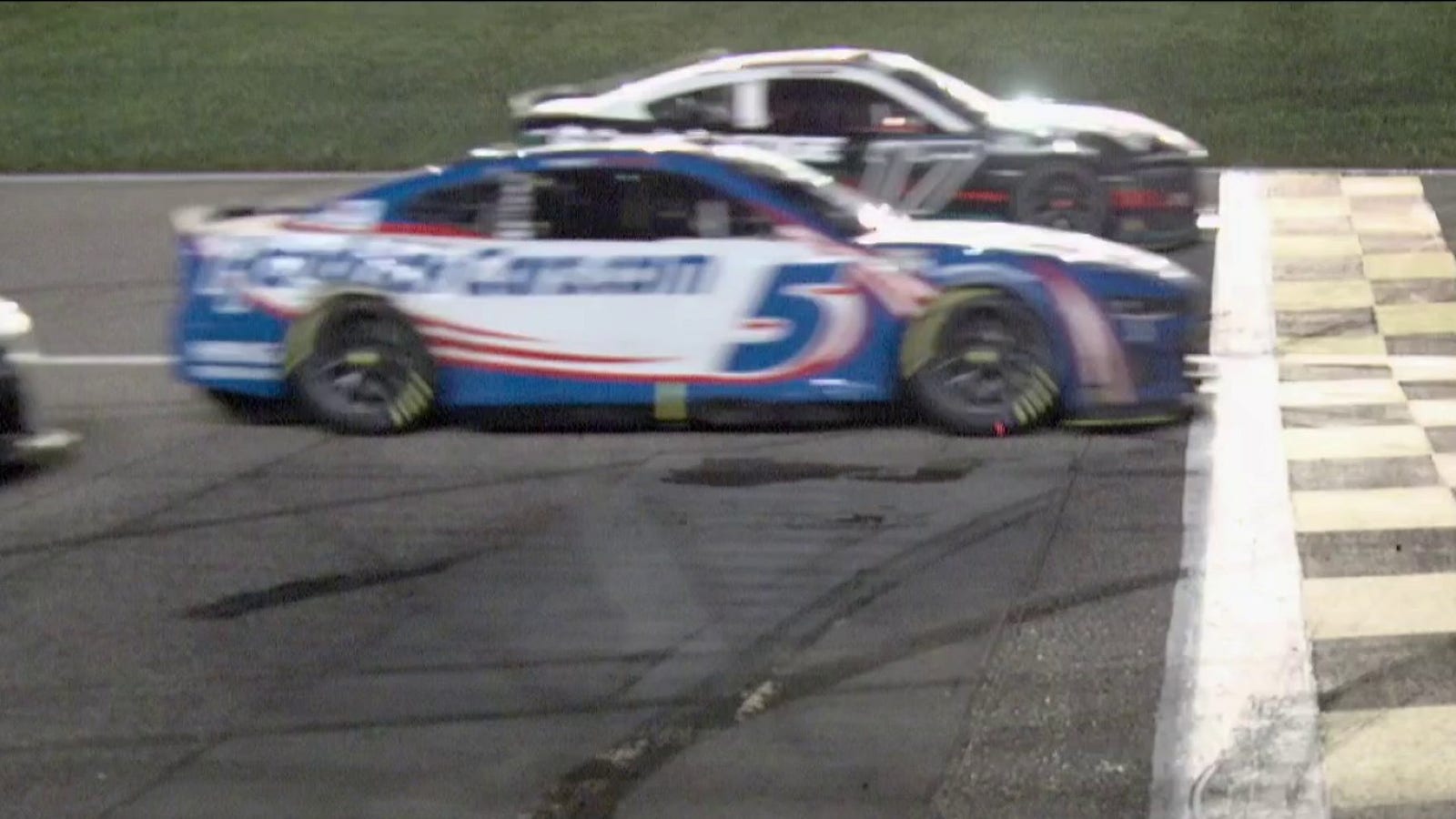Bob Pockrass
FOX NASCAR Insider
NASCAR’s closest-ever finish — Kyle Larson beat Chris Buescher by 0.001 seconds Sunday at Kansas — has brought scrutiny to how NASCAR determines the winner at the finish line.
That is good. What’s more important is understanding how the NASCAR timing and scoring works.
The fact that Buescher crew chief Scott Graves talked with NASCAR and accepted the explanation shows that no matter how badly he wanted to have evidence to show his driver won the race, he didn’t have anything he could rant and rave about. A protest to finishing results has to be made within 20 minutes after the results were posted, and none was made.
But that still doesn’t mean NASCAR’s process shouldn’t be scrutinized and explained.
The hard part is it is confusing, and the technology of high-speed cameras is tough to comprehend.
I tried to explain some of it a couple of months ago here.
… and show even more of my interview for that story (on a very windy day) here:
The other difficult thing is that the finish line Sunday at Kansas Speedway was, well, not the most straight line ever painted. That created confusion, too.
But, basically, NASCAR uses the same technology used to determine the winners of horse races, Olympic track-and-field and other major sporting events.
The camera system uses a laser, razor-thin line and anything that moves past that line activates the high-speed camera, which takes images at several thousand per second and the computer software generates an image in nearly real time of the cars at the time they hit that line.
So the “photo” in the photo finish isn’t a photo at all — it’s an image that is a compilation of photos. That’s why it looks compressed. And at night time with the reflections, it has a slight blur. It also only takes images of objects in motion, so the actual painted line isn’t part of the image.
NASCAR lines the timing-and-scoring line with the edge of the painted finish line — at some tracks it is a yellow (or another color) line in the middle of artwork at the stripe and at some tracks it is the front edge ahead of the artwork (at Kansas, that was white).
Kyle Larson wins in a PHOTO FINISH at Kansas

Since those areas sometimes get repainted during a race weekend — fans can even write messages to drivers on the start-finish line at most tracks — it makes some sense that the lasered line might be just a tiny, tiny bit off of the painted finish line.
Speaking of things that are a tiny bit off, the confusing part of the Larson-Buescher finish was also that the timing and scoring transponder showed Buescher ahead of Larson.
The transponders — one on each side of the car — is located near the rear of the center section of the chassis. Teams attach a bracket using bolt holes that are already drilled into the chassis that they receive from NASCAR. The transponder is then placed in the bracket.
The timing lines embedded into the racing surface then take into account where they are in the car compared to where the finish line is — so when the front edge of the car goes across the line, the transponder is being triggered by the timing lines embedded in the track.
When talking about razor-thin margins, it wouldn’t be out of the question that a transponder is just so barely in a different spot in two cars (cars obviously get knocked around during a race), or the angle of the car as it is crossing the line could trip the transponder at a millisecond difference than it actually crosses the finish line. A NASCAR video posted Tuesday night indicated the transponder margin of error is +/-0.0015 seconds.
So the fact that the transponder records one thing but the photo says another seems like something that can reasonably happen.
Where does NASCAR go from here? Maybe someone needs to go out to the finish line with a straight edge and see if any touch-up needs to be done before an event. Maybe NASCAR should take an image at the start of the race from its laptop of the actual razor-thin finish line overlaid on the painted start-finish line in case there is any question afterward of its location.
And it needs to get the image of the finish used to determine the winner disseminated as quickly as possible.
Of course, the most important thing is to get it right. And from everything NASCAR has said and the way the competitors reacted, it did Sunday night.
Bob Pockrass covers NASCAR for FOX Sports. He has spent decades covering motorsports, including over 30 Daytona 500s, with stints at ESPN, Sporting News, NASCAR Scene magazine and The (Daytona Beach) News-Journal. Follow him on Twitter @bobpockrass.

Get more from NASCAR Cup Series Follow your favorites to get information about games, news and more
